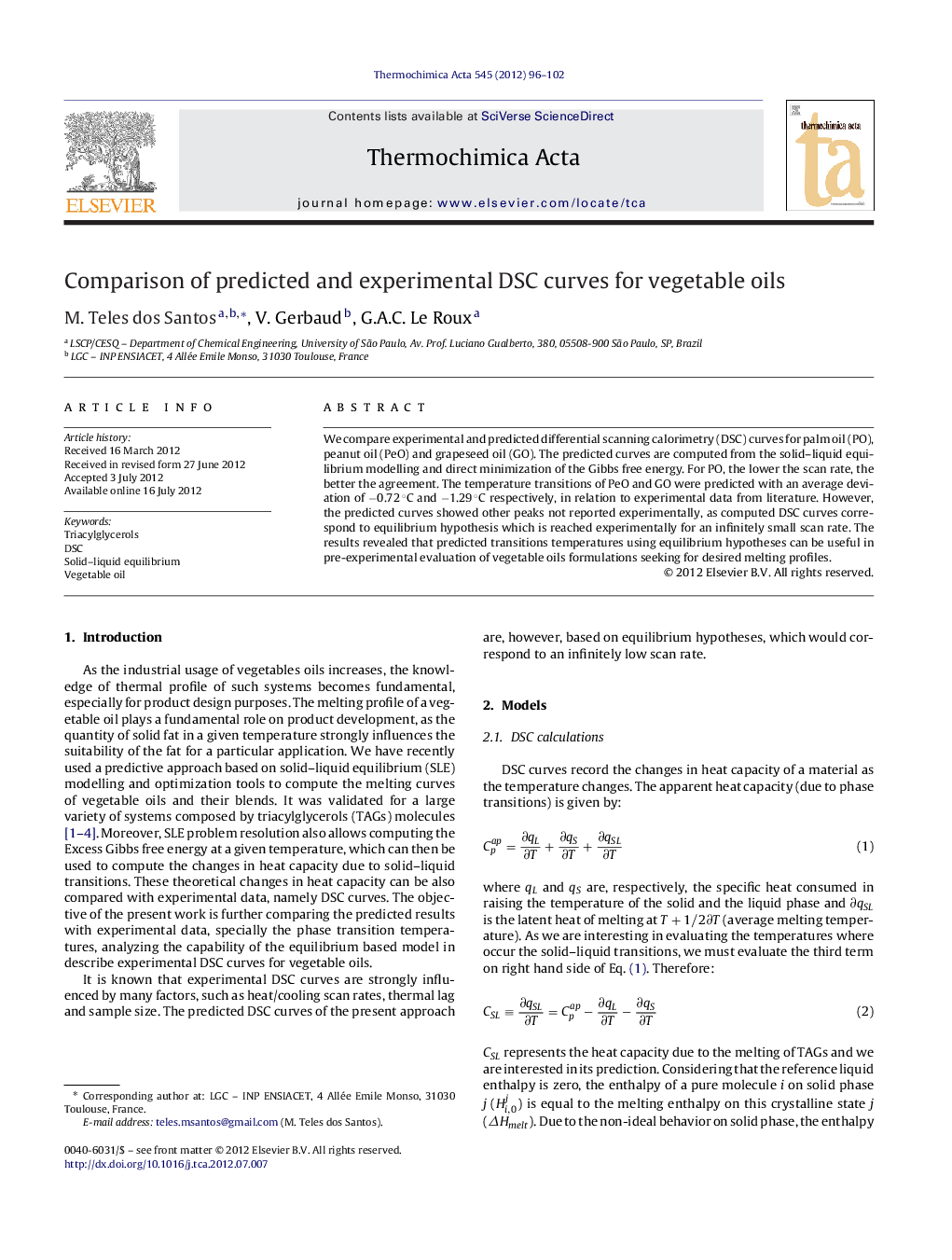| Article ID | Journal | Published Year | Pages | File Type |
|---|---|---|---|---|
| 674042 | Thermochimica Acta | 2012 | 7 Pages |
We compare experimental and predicted differential scanning calorimetry (DSC) curves for palm oil (PO), peanut oil (PeO) and grapeseed oil (GO). The predicted curves are computed from the solid–liquid equilibrium modelling and direct minimization of the Gibbs free energy. For PO, the lower the scan rate, the better the agreement. The temperature transitions of PeO and GO were predicted with an average deviation of −0.72 °C and −1.29 °C respectively, in relation to experimental data from literature. However, the predicted curves showed other peaks not reported experimentally, as computed DSC curves correspond to equilibrium hypothesis which is reached experimentally for an infinitely small scan rate. The results revealed that predicted transitions temperatures using equilibrium hypotheses can be useful in pre-experimental evaluation of vegetable oils formulations seeking for desired melting profiles.
► Solid–liquid transitions temperatures for triacylglycerols mixtures can be predicted. ► The lower the scan rate, the better the agreement between predictions and experiments. ► Minimization of Gibbs energy is useful for predict thermal profile of vegetable oils.
